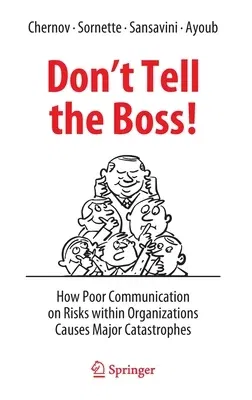After a major disaster, when investigators are piecing together the
story of what happened, a striking fact often emerges: before disaster
struck, some people in the organization involved were aware of dangerous
conditions that had the potential to escalate to a critical level. But
for a variety of reasons, this crucial information did not reach
decision-makers. So, the organization moved ever closer to catastrophe,
effectively unaware of the possible threat--despite the fact that some
of its employees could see it coming.
What is the problem with communication about risk in an organization,
and why does this problem exist? What stops people in organizations or
project teams from freely reporting and discussing critical risks? This
book seeks to answer these questions, starting from a deep analysis of
20 disasters where the concealment of risks played a major part.
These case studies are drawn from around the world and span a range of
industries: civil nuclear power, coal, oil and gas production,
hydropower energy, metals and mining, space exploration, transport,
finance, retail manufacturing and even the response of governments to
wars, famines and epidemics.
Together, case studies give an insight into why people hesitate to
report risks--and even when they do, why their superiors often prefer to
ignore the news.
The book reviews existing research on the challenges of voice and
silence in organizations.
This helps to explain more generally why people dread passing on bad
news to others--and why in the workplace they prefer to keep quiet about
unpleasant facts or potential risks when they are talking to superiors
and colleagues.
The discussion section of the book includes important examples of
concealment within the Chinese state hierarchy as well as by leading
epidemiologists and governments in the West during the novel coronavirus
outbreak in Wuhan in 2019-2020. The full picture of the very early stage
of the COVID-19 pandemic remains unclear, and further research is
obviously needed to better understand what motivated some municipal,
provincial and national officials in China as well as Western
counterparts to obfuscate facts in their internal communications about
many issues associated with the outbreak.

